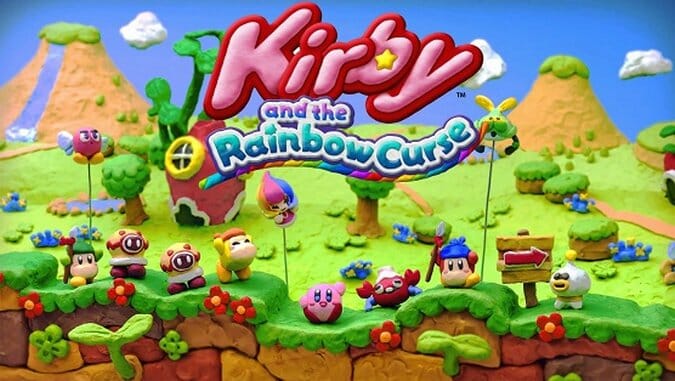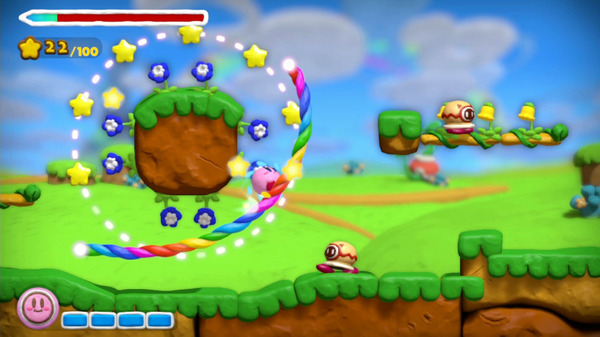Kirby and the Rainbow Curse: Claystation

Kirby is the modern videogame age’s ultimate counter-programming. Through a twenty-year career spanning the emergence of polygons, the ability to explore massive open worlds, and a continued attempt to blend ultra-realism with cinematic stories, Kirby has largely remained what he has always been: a pink ball with a face. His platforming games hinge on an ability to copy his enemies’ abilities, yet the games themselves follow no trends. On the same day Kirby and the Rainbow Curse released on Wii U last week, The Order: 1886 released for the PlayStation 4. Each showcase richly detailed environments. Each break new ground with the sheer fidelity of their chosen aesthetic. But whereas The Order takes place in dark, gloomy urban centers filled with violence and retro-futuristic technology, Kirby drops you in a Technicolor prairie built from clay.
The desire to shed preconceived rules for full retail console games extends to how you play. You do not control Kirby directly. Instead, the player draws on the Wii U GamePad and Kirby rolls along these “rainbow ropes.” You see, a diabolical artist named Claycia soaked the color from Dream Land, but a magical paintbrush named…. well, let’s just say an emphasis on story is another place where Rainbow Curse veers away from the expected standards of the day.
What appears to be a simple, playful lark through a child’s crafts table explosion slowly reveals its subtle complexities. There’s a mastery needed to play fluidly even as the basic means of input—drawing lines and tapping a screen—remains the same throughout. Most of these advanced maneuvers are learned through trial and error. Swirl your stylus into a tight circle and Kirby slides along, speeding up as he shoots out of the loop-de-loop; a short flat wall bounces Kirby into facing the opposite direction.
If you don’t stumble upon these through imaginative playing, the game provides the lightest of tutorials when you die: a small picture pops up, as if drawn on a sheet of loose-leaf paper with a marker, illustrating hints and clues. The whole enterprise feels as if it was concocted by a gifted eight-year-old with a windfall of inheritance after a grandparent died. To fill this new miserable void, only the most jubilant will do. And in our era of two thumbsticks and eight buttons needed, it’s liberating to play a full console game with a single stylus.
The root of that word is key: Kirby and the Rainbow Curse is meant to be played with style. To trudge through each level, your movement dictated by an impatient ever-forward swiping of your magic paintbrush, is to completely miss the point (and hundreds of shiny baubles hidden off the main path). On the very first stage, you can draw a line and send Kirby toward the goal. Or: Draw a curving line upward, sending Kirby up off the screen. You’ll find a sky filled with stars, the game’s currency and arbiter of special attacks, granted after collecting one hundred. Go high enough and the world goes black-and-white, the story conceit providing player a challenge along with simple animus.
Within this monochrome patch you can no longer draw your rainbow ropes. Trying to draw here shows off the game’s lovely attention to visual and audio detail; your would-be line never quite finds purchase, like a sad, sputtering steam-rope that dissipates (slide a wet chopstick over a hot skillet for a similar effect). There is a limit to this world’s Technicolor excess. With enough momentum, though, you can wield these painted ropes to shoot Kirby up beyond the silent movie frame and gather some far off treasure: a bounty easily missed if you hadn’t strayed from the straight and narrow.
